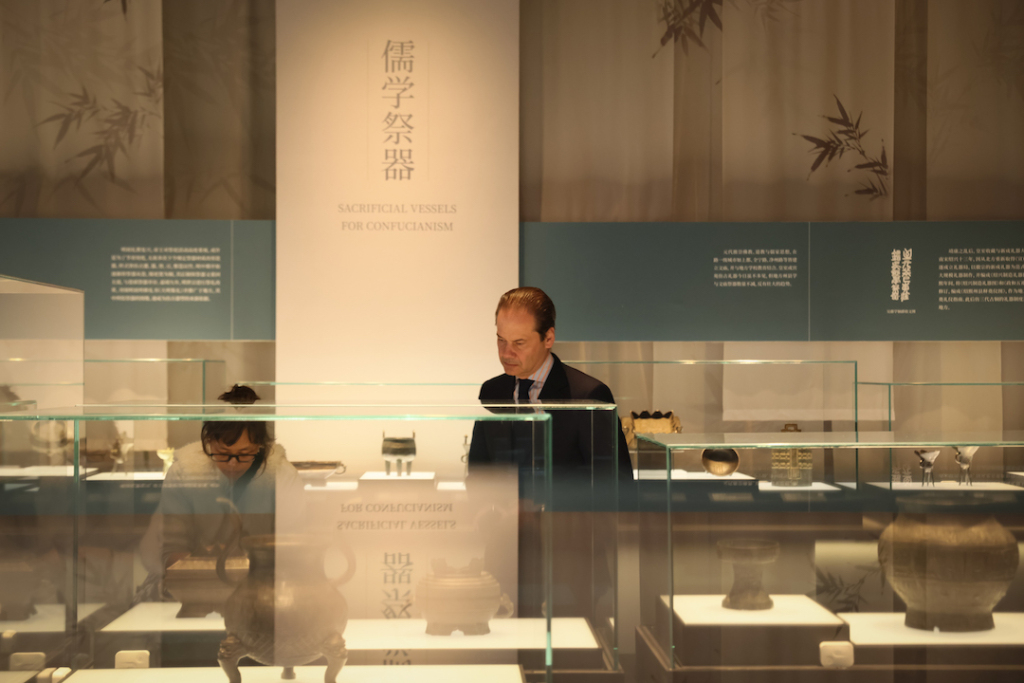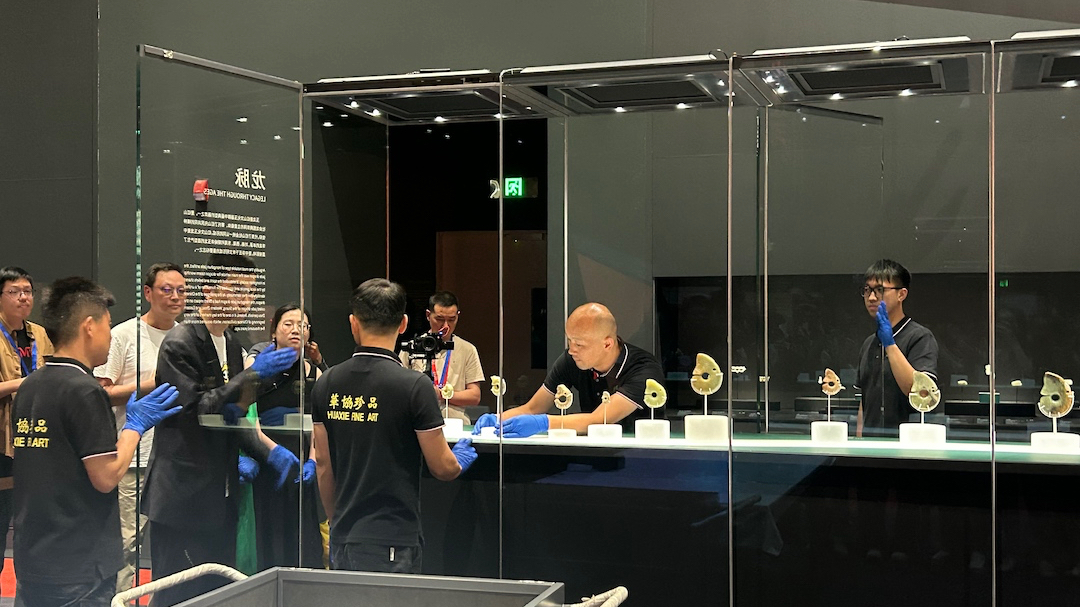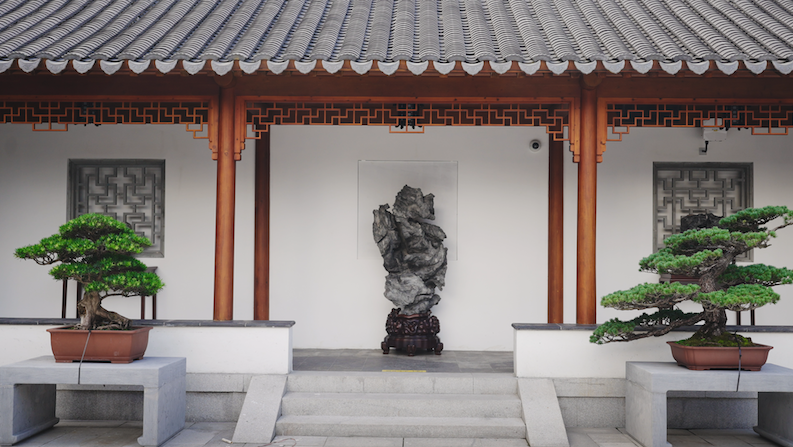

In conjunction with the construction of the rooftop garden at the East Wing of the Shanghai Museum, a clever concept and meticulous design have transformed the rooftop into a secluded yet vibrant Jiangnan neoclassical garden — Yunlin, one of the rare aerial gardens in Shanghai.
On September 5, as part of the new exhibition "Dueling Stones: Jiangnan Stones and Haipai Bonsai Exhibition," the rooftop garden was officially unveiled. The garden is dotted with ancient stone exhibits, renowned stones, and Haipai bonsai, all harmoniously complementing the classical garden exhibit space, enhancing the aesthetic appeal of the newly opened Jiangnan Craft Pavilion and the rooftop garden.
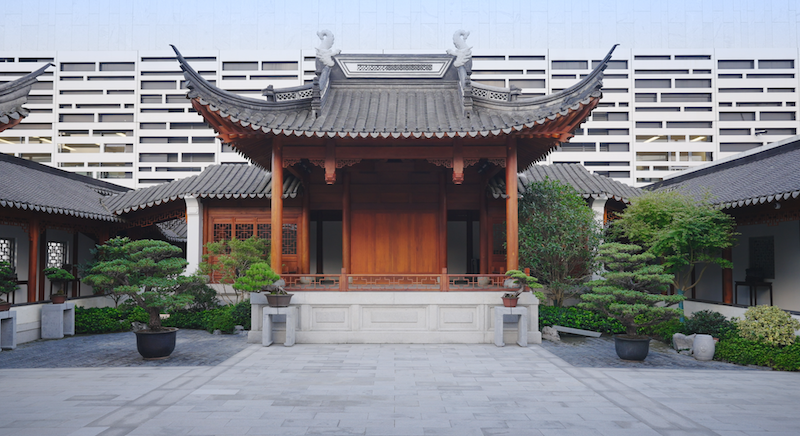
Exhibition Scene: Rooftop Garden of the Shanghai Museum East Wing
Visitors can access the rooftop garden by taking the escalator up from the permanent exhibition hall of Jiangnan Crafts on the fourth floor of the East Wing. After exiting the elevator, a passageway leads to a bright, open-air space surrounded by trees and rocks, revealing a new vista of the Jiangnan neoclassical garden — Yunlin. The design of Yunlin follows the traditional techniques of rock layering and water management, showcasing the unique charm of Jiangnan gardens. This area extends the indoor exhibition space into the outdoor environment, illustrating the museum's openness.

Exhibition Scene: Rooftop Garden of the Shanghai Museum East Wing
According to Tang Shifen, the Party Secretary of the Shanghai Museum, "Dueling Stones: Jiangnan Stones and Haipai Bonsai Exhibition" marks the first use of the rooftop garden. Here, ancient and modern stones are juxtaposed with lush bonsai, beautifully uniting under the Jiangnan garden setting at the roof of the East Wing. Future exhibitions and educational activities corresponding to this aesthetic, such as Jiangnan literati gatherings, Kunqu opera, Pingtan, and Guqin arts, will also take place in this courtyard space.
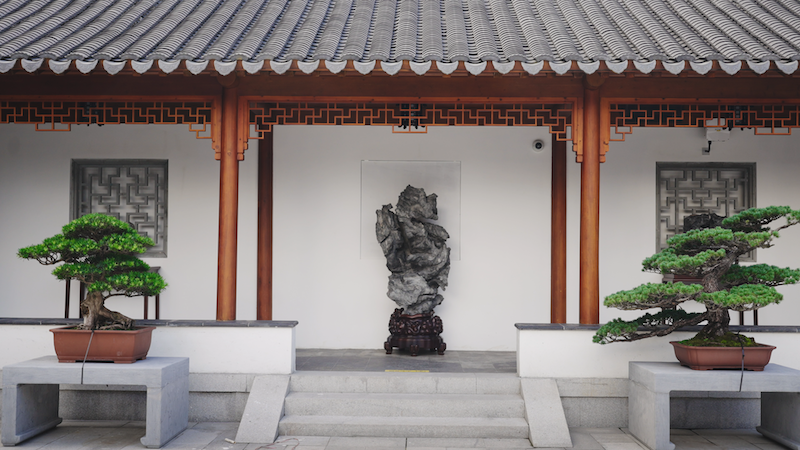
Exhibition Scene: Rooftop Garden of the Shanghai Museum East Wing
The garden is divided into three sections: east, central, and west. Within the garden, there are three prominent stones: on the southeast side of the entrance to the west garden's round arch gate is the ancient Taihu stone called "Huiyun Peak," accompanied by a hexagonal pavilion named "Huiyun"; at the southwest corner of the west garden is a small garden named "Luxiang," featuring a large Lingbi stone in the shape of "Little Yunjul Peak"; in the central garden, on the north side of the courtyard, there is a half pavilion called "Zhenji," which houses a colorful Lingbi stone in the shape of "Tiyun Peak." There is also a prominent Lingbi stone called "Yunjul Peak" located on the outdoor lawn on the east side of the first floor of the East Wing, echoing the stones in the rooftop garden.

Lingbi Stone "Little Yunjul Peak"
This exhibition is located in the east and central sections of the rooftop garden of the Shanghai Museum's East Wing and the atrium of the Jiangnan Craft Pavilion, skillfully integrating ancient and modern stone offerings along with Haipai bonsai, seamlessly blending with the garden and creating a fluid exhibition flow. Visitors can immerse themselves in the rich natural scenery encapsulated within the exhibition space.
“From an aesthetic standpoint, the garden, stone appreciation, and bonsai form a triad of art, all sharing a commonality: they seek to demonstrate the unity of humanity and nature through the blend of artificial and natural creations. This exhibition embodies such a cultural perspective,” explained Shi Yuan from the Crafts Research Department of the Shanghai Museum.
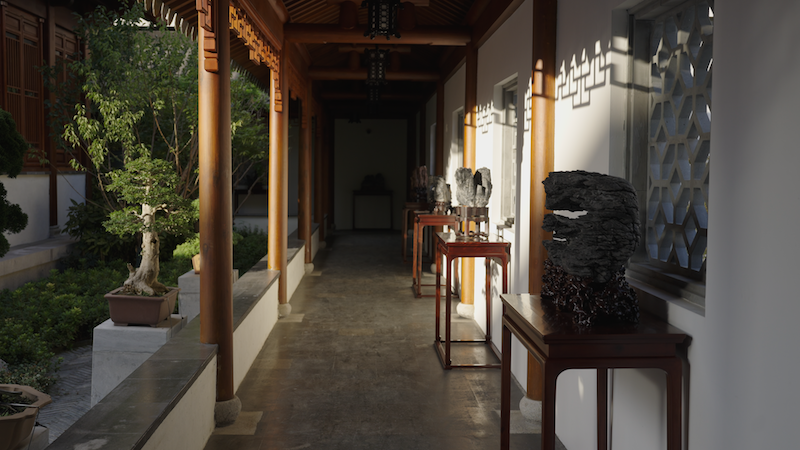
Exhibition Scene: Rooftop Garden of the Shanghai Museum East Wing
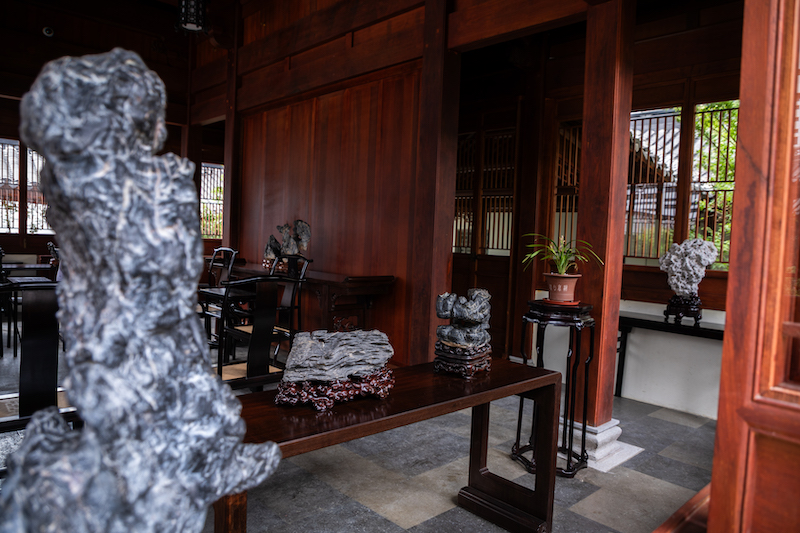
Exhibition Scene: Rooftop Garden of the Shanghai Museum East Wing
The exhibition is divided into four themes: "Ancient Stone Offerings," "Renowned New Stones," "Haipai Bonsai," and "Seaside Orchid House." In addition to treasured stones from the Shanghai Museum, Xiling Seal Engraving Society, and private collections, there are also new renowned stones provided by the Shanghai Stone Appreciation Association and Haipai bonsai combinations from the Shanghai Botanical Garden.
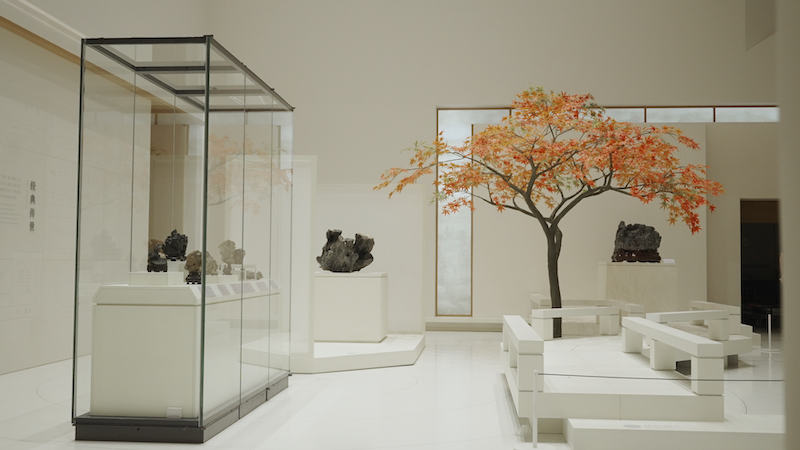
Exhibition Scene: Jiangnan Craft Pavilion of the Shanghai Museum
“Due to the limitations of the exhibition conditions, the number of ancient stone exhibits is relatively small, so we have selected representative stones of various mineral types and eras, including Lingbi stone, Chrysanthemum stone, Ying stone, Taihu stone, and petrified wood,” Shi Yuan stated.
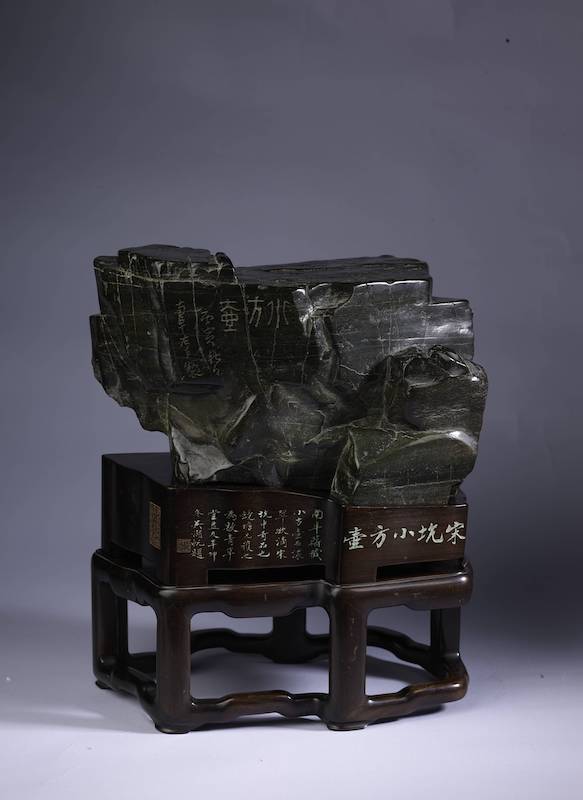
Lao Mountain Green Stone Offering "Little Square Pot"
Among the ancient stone offerings, the Lao Mountain Green Stone offering "Little Square Pot" is a representative piece of China's traditional scholarly stone offerings. It is inscribed by Gao Fenghan, a renowned figure from the Yangzhou School of Painting during the Qing Dynasty, who was one of the "Eight Eccentrics of Yangzhou." The "Little Square Pot" was treasured by Qian Jingtang and Wang Yiping, with calligrapher and collector Wu Hufan also appreciating it greatly, writing inscriptions on the front of the base and creating an illustration specifically for this stone.

Lingbi Stone "Water-Painted Ling Stone"
Another featured item, the "Water-Painted Ling Stone," famously housed by the Xiling Seal Engraving Society, was collected by many famous connoisseurs over time. This piece of Lingbi stone was an old collection of Wu Changshuo, a prominent master of calligraphy and painting. It was later recognized and acquired by Mr. Sha Menghai, the former president of the Xiling Seal Engraving Society, becoming a treasure in their collection. The inscription on the stone indicates that it originates from the former residence of the well-known scholar Mao Bijiang from the late Ming to early Qing dynasty, which adds to its alias of "Water-Painted Ling Stone."
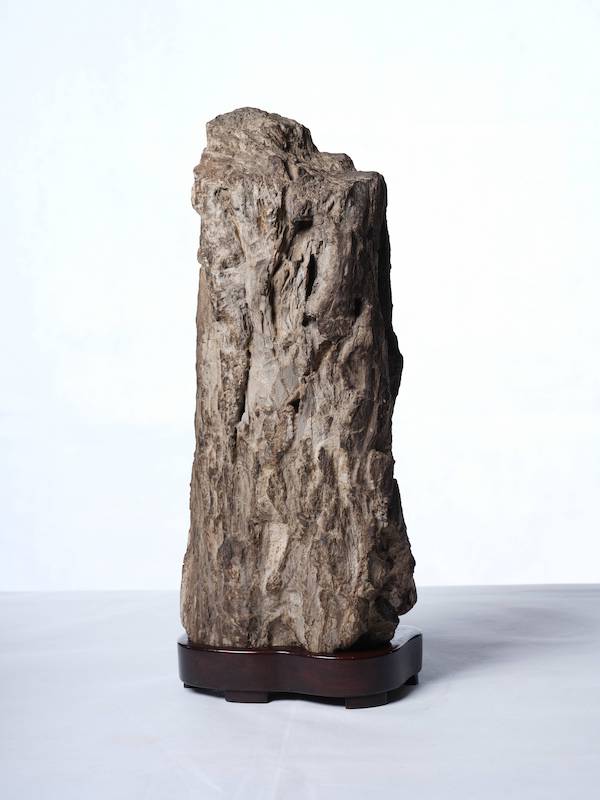
Petrified Wood Offering
Another privately held ancient stone offering — a petrified wood offering — has deep connections to Shanghai. Petrified wood, preserving the shape and texture of the original tree, is a unique variety among traditional ornamental stones. This piece has an inscription on its base from the Qing official Shen Bingyuan, recounting his acquisition of the stone in Shanghai and his subsequent inscription the following year. Shen Bingyuan held various official positions in the Wuxi area, including as the magistrate of Shanghai and other locales, making this ancient stone offering an artifact closely tied to Shanghai's history.
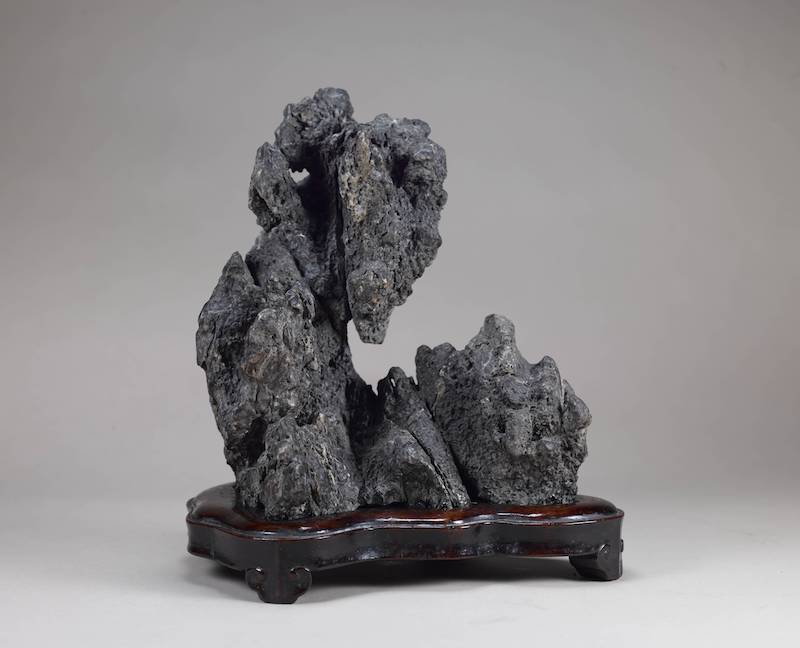
Ying Stone Ink Stone "Silent in Xiangyang"
The 'Renowned New Stones' thematic section showcases celebrated stones, including Lingbi stone "Cave of Heaven," Taihu stone "Cave of Tranquil Thoughts," Kun stone "Kun Zhi," and Ying stone "Zhong Ling Yu Xiu," provided by the Shanghai Stone Appreciation Association, reflecting the rich heritage of Chinese stone appreciation culture.
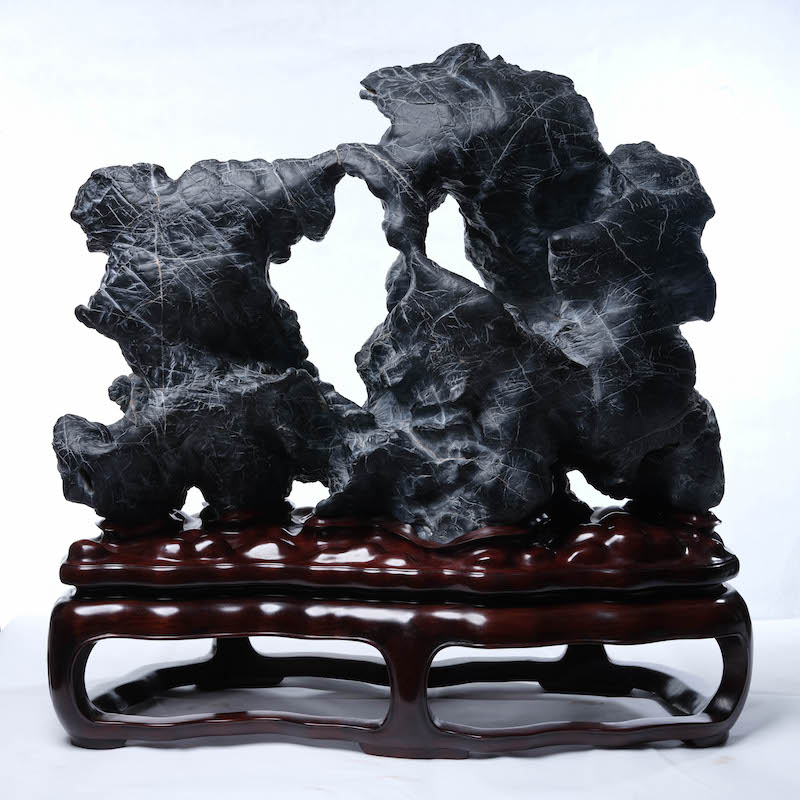
Lingbi Stone "Cave of Heaven"
Shi Yuan explained that, due to the recent acquisition of a collection of traditional scholarly stones, the Shanghai Museum has gradually developed into a significant platform for collecting, studying, and showcasing traditional Chinese ornamental stone art. However, displaying bonsai in a museum dedicated to ancient art is still a rarity. As one of the co-organizers of this exhibition, the Shanghai Botanical Garden, with its fifty-year history, has provided numerous renowned Haipai bonsai as well as innovative creations like the mountain-water orchid combination for this event. Yang Wei, the director of the Shanghai Botanical Garden, referred to this exhibition as a “cross-disciplinary” endeavor.
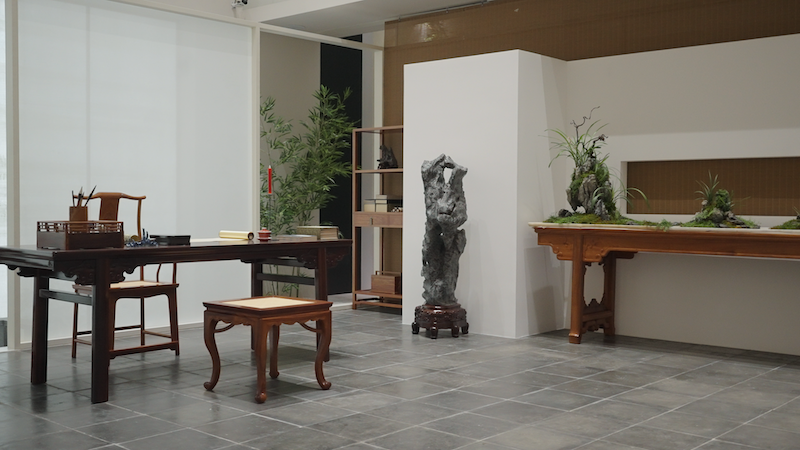
Exhibition Scene: Jiangnan Craft Pavilion of the Shanghai Museum
Haipai bonsai is a style of bonsai art named after Shanghai, primarily found in Shanghai and its surrounding areas. It integrates botanical cultivation, morphology, physiology, landscape art, and plant design into a traditional cultural art form. Visitors will see bonsai such as "Clouds by the Water" Five-needle Pine, "Flying Clouds and Moon" Golden Needles Five-needle Pine, "Quiet Observation" Black Pine, and "Ancient Rhythms" Ficus, among others.
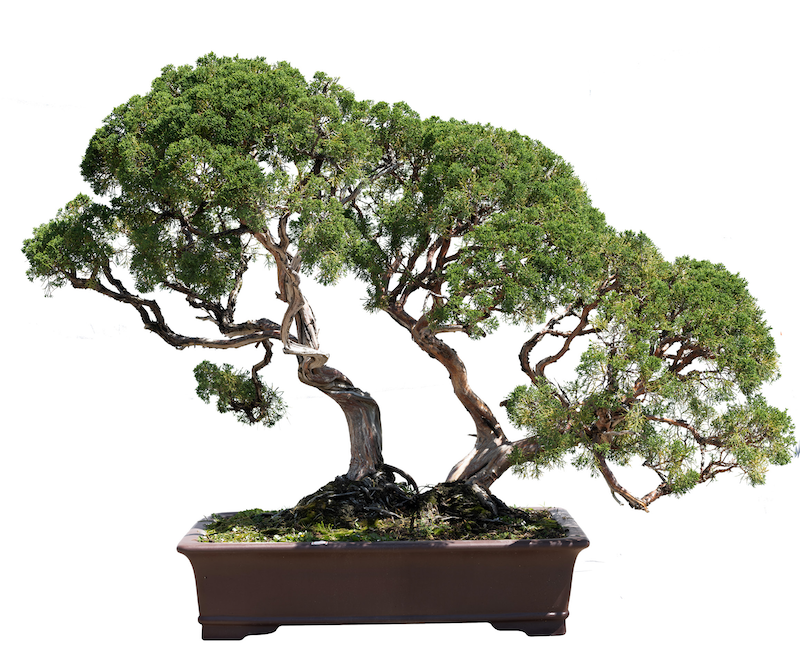
"Village Birds Singing" Yew

"Clouds by the Water" Five-needle Pine
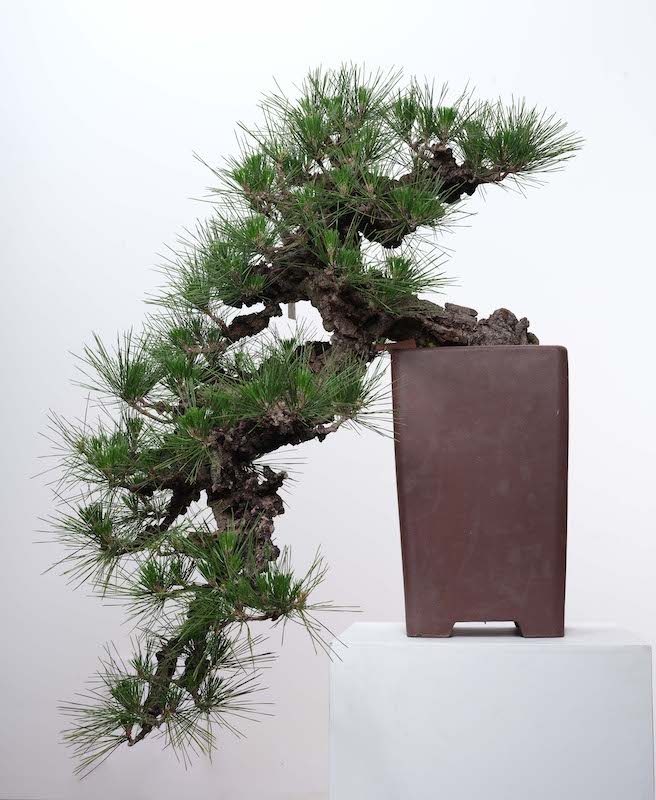
"Things of Long Importance" Pine

"Quiet Observation" Black Pine
Yang Wei, the director of the Shanghai Botanical Garden, told reporters from The Paper that Haipai bons
